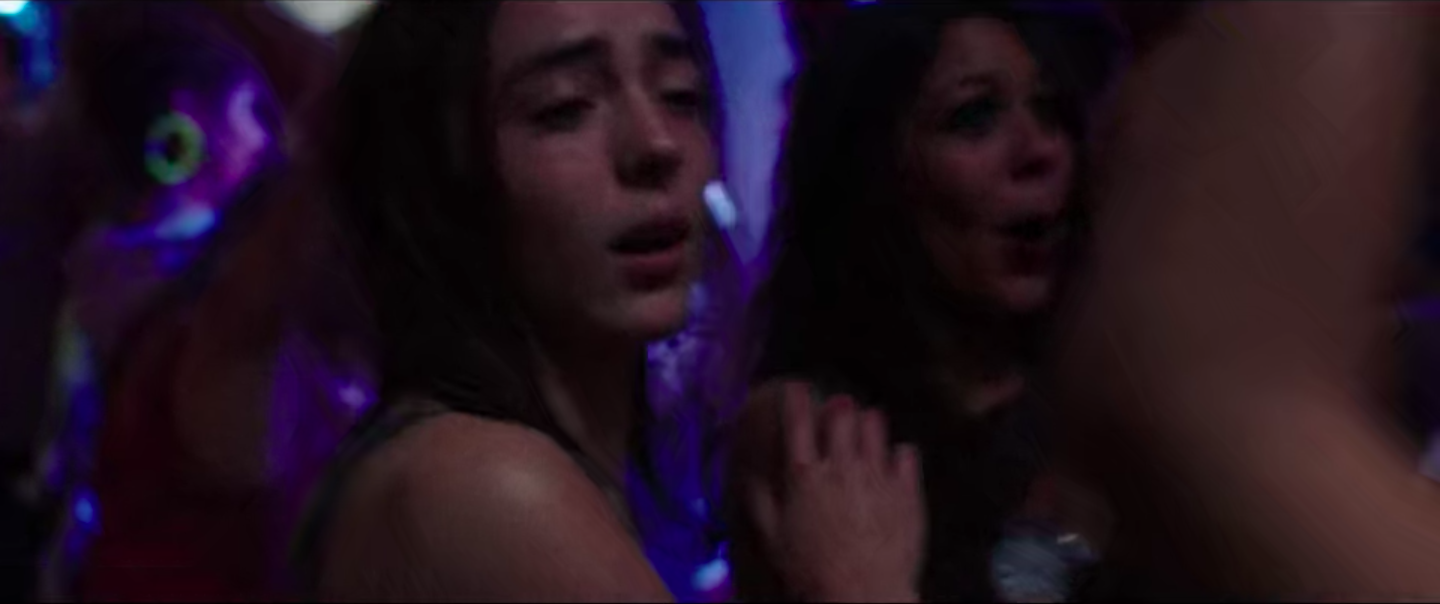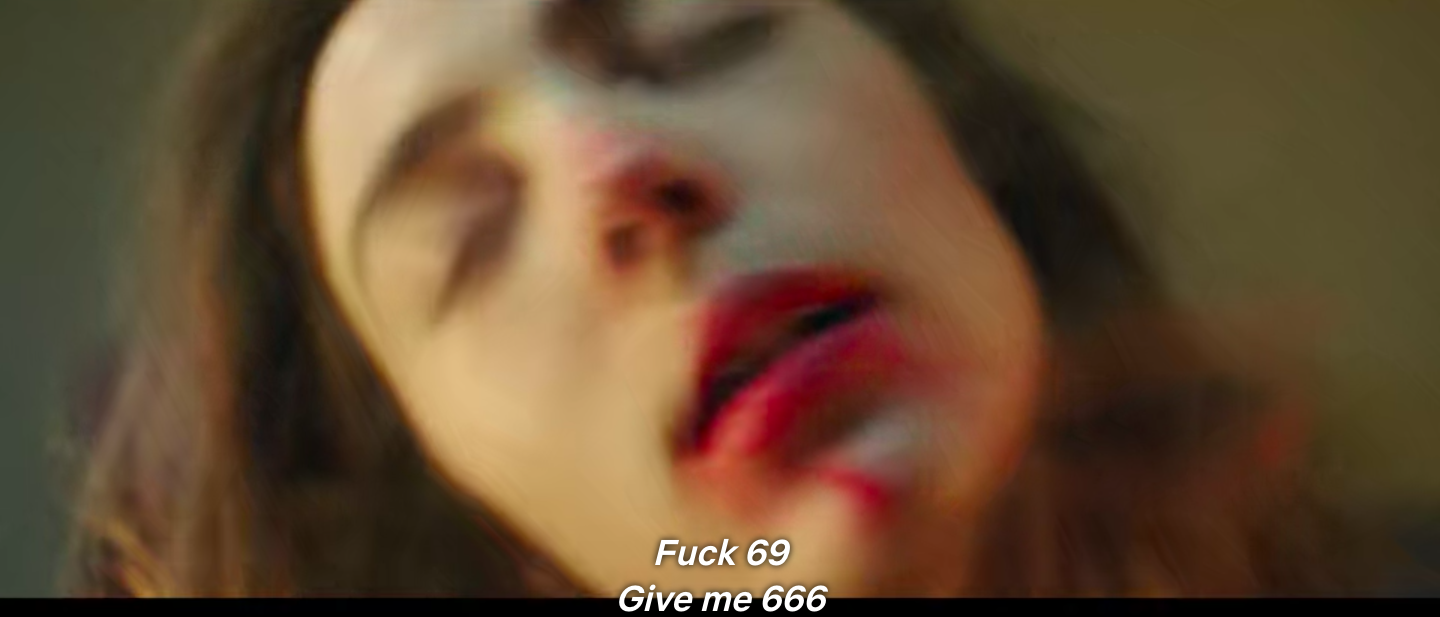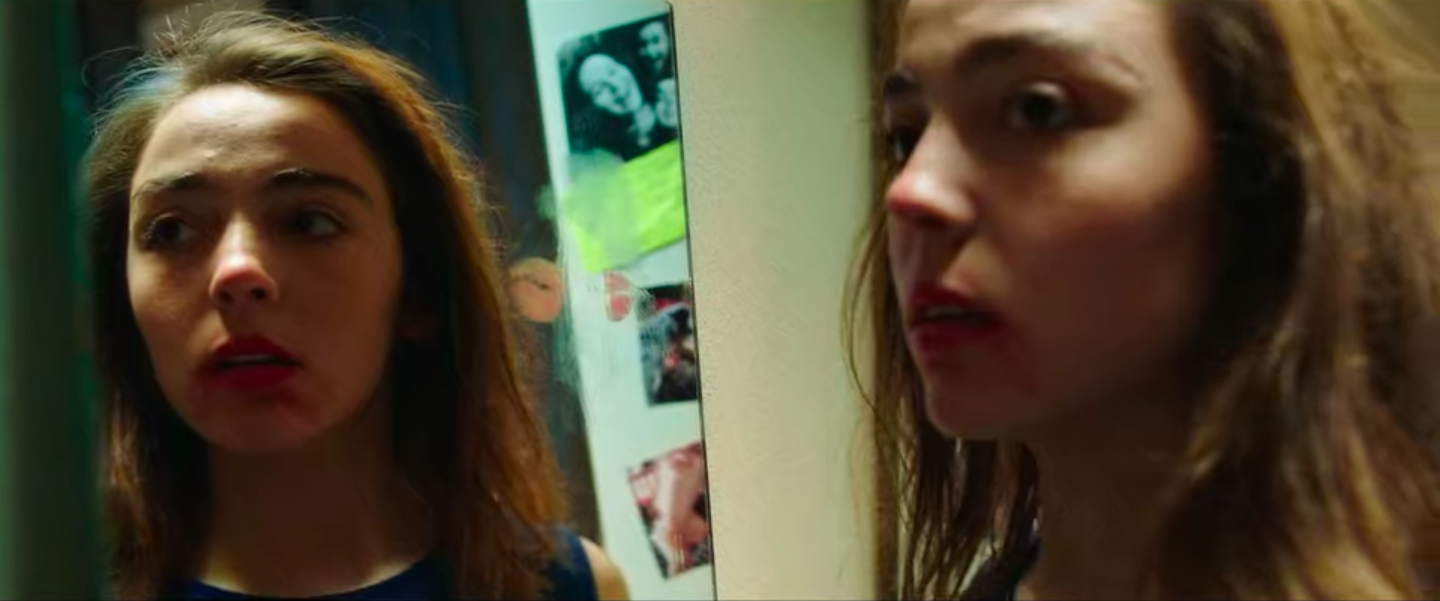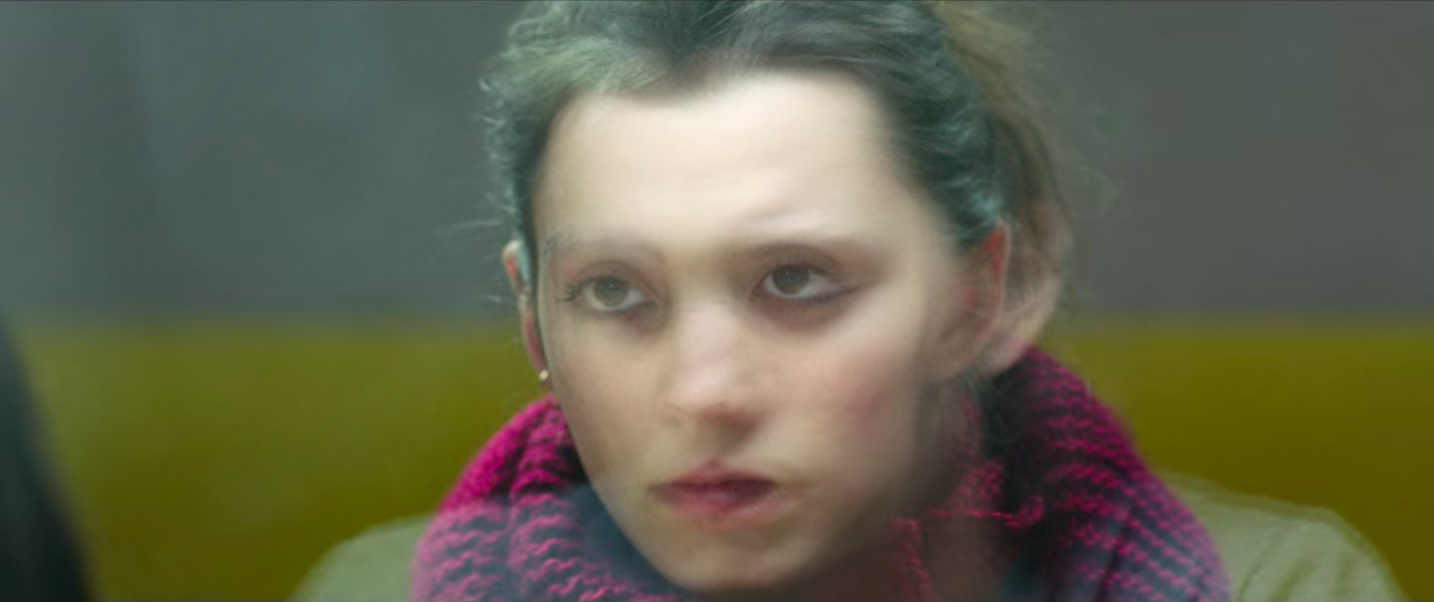Vegan Horror | Raw
Crossing boundaries, indulging appetites.
Film discussed: Raw (2016). Major spoilers.
Content warning: cannibalism, sexual aggression.
I am not a vegan, but I tell people I am. I’ve been less than a true omnivore since college, alternatively a vegetarian, a pescatarian, and a true vegan. Then I started reading about the vegans who eat bivalves and found myself convinced that oysters and mussels raise neither the animal welfare nor the ecological concerns that animate my perhaps fastidious diet choices.
Socially, this unusual diet does me no good. For vegans, I am not really one of them. Or, at least, this is how my guilty heart feels. In reality, the vegans I know and meet are pretty damn chill despite the stereotypes of the carnist world. (I’ve only ever encountered the in-your-face vegan as a teen, where some local punks and a really intense dude I went to Hebrew school with fit the mold. But, I mean, we were teens.) For omnivores, I might as well be vegan. Just as difficult to go to dinner with (I try hard not to be). Just as likely to be quietly judging them (I’m not—or, at least, not much). The thing is, labeling myself “vegan” makes me legible as a dining companion. The boundaries—no animal products—are clear. I want to make things easier, not spend a lot of time explaining my diet. I am quite aware that no one wants to hear it.
Boundaries order and categorize the world, they contain behavior and they send a message. I’m perhaps most uncomfortable explaining my diet because of the clean, expressive boundary vegans set—one that I do not adhere to. Vegans redraw the boundary between food and not food, excluding what many of us place at the center of the plate. Vegans motivated by animal rights or animal welfare concerns also insist on another kind of controversial boundary expansion: expanding our understanding of “persons” to include animals. Animals are not human, but they are sentient, capable of morally cognizable suffering, with some recognizable stake in their own lives. In short, animals are not neatly excludable from the basic moral obligations we owe each other.
No film recently has got me thinking about boundaries, crossing them, and the moral and emotional stakes represented by our diets, like Julia Ducournau’s 2016 breakout Raw. If the diet in question is cannibalism, all the better for thinking about boundaries, because the line we’re crossing here is a big one.
Raw follows Justine, a vegetarian, as she enters onto several new terrains all at once—the most notable being her developing appetite for human flesh. She begins veterinary school, where her sister Alexia is already a student, and where, early on—as part of the ever-present hazing more fitting, to my mind, for a military boarding school than a veterinary college—she’s induced to eat rabbit kidney (raw, naturally). What follows is an art horror coming-of-age spiral into weirder and darker places. Justine develops a craving for meat and, eventually, after an accident involving a pair of scissors and her sister’s finger, for human flesh. She explores her sexuality too, beginning school a virgin and becoming enmeshed, quasi-romantically, with her gay roommate Adrien. And she learns more and more disturbing facts about her sister. The taste for human flesh, you see, is inherited. She has it, Alexia has it, and so does her mother.
Early in Raw, Justine finds herself in a chaotic party scene—people are dancing, kissing, popping pills, in various states of undress—and she’s totally lost. We follow her, our handheld frame losing her and finding her again, struggling through the writhing crowd, as she’s jostled, turned back, straining to make her way. Raw wants us to contemplate the nature of boundary transgression but, more than that, it wants us to feel it. We’re with Justine—or, at least, trying with difficulty to follow her—newly launched from her parents’ house, at sea in this new, seething world. If this is adulthood, it’s a struggle, and whatever pleasures it offers are not yet ours.

Boundary transgression never stops feeling bad. As Justine becomes a carnivore, and then more than a carnivore, her body itself becomes a site of horror. She experiences rashes, nose bleeds, the gnawing sensation of an empty stomach. In one scene we find her beneath the covers of her bed experiencing some type of excruciating discomfort. She’s tossing and turning, drenched in sweat. There’s the impression of something poking at her through the covers. She’s screaming. Her transformation from vegetarian to cannibal is quite the nightmare.
And then there’s the ever-present hazing, a rite of adulthood that, unlike her diet-related troubles, is something she shares with the others in her class. Shame and humiliation are a constant, signaled quite plainly when the first years gather for a picture and have animal blood dumped on them Carrie-style. The class, on their way to the party described above, are made to crawl on their hands and knees through the dark. They call the older students “elders” while they are called “rookies.” Justine is held up by an “elder” because she’s dressed improperly (the decreed dress code is “night club,” she’s supposed to”wear something hot”) and made, as punishment, to wear a diaper to class over her jeans. Justine’s ascent into adulthood never feels safe. Her sense of autonomy and dignity feel at risk. It’s a world of arbitrary punishment, sudden changes, lack of control.
There’s a second big party scene much later in the film. The vibe is much the same, but Justine is not. She navigates the crowd with a wasted confidence. The frame is more restrained, less searching than last time, tracking her to the bar where she demands an extra large drink. She continues into the crowd, where she aggressively kisses a guy and, when his girlfriend shoves her off, forcefully kisses her. She’s still lost, but in a different kind of way. She’s out of control—drunk, aggressive, inappropriate. One way of accommodating oneself to the tumult represented by the party is to embrace it. To go along for the ride. Her journey has been a struggle, and she’s come through, but she’s drunk, hungry, and searching. This feels nothing like the first party, but it feels worse.
As a (mostly) vegan, I’m sometimes confronted with a basic question about whether to eat what’s in front of me: I’ve purchased the wrong thing, or I’ve miscommunicated, or someone else has miscommunicated, and I’ve ended up with a dish in front of me that isn’t vegan. Now my veganism is rooted in moral and ecological concerns and, at this point, the damage is done. The food has been purchased, or prepared, or plated. No one’s siphoning the chicken broth out of that soup and reusing it. So why not eat it? My basic answer, ethically, is that yes, eating it is fine. There’s no reason to let it go to waste.
But I don’t eat it. I used to, early on—but these days I can’t. And I have no good reason for this—at least no good reason grounded in the concerns that originally set me on this dietary path. The thing is, eating dairy or meat makes me feel bad. Veganism has become a kind of grounding practice. Is there something narcissistic or fetishistic about this? I hope not, and, honestly, it’s not like I retch when I realize the dessert I’m eating actually has egg in it. It’s just that diet has a way of reminding you who you are and what you’re about. It’s intimate. It’s personal. If an equivalent mistake happens in another domain—if, say, I realize the pair of jeans I’m wearing were produced under ethically questionable circumstances (a rather common realization in this world)—I don’t stop wearing them. But, at least for me, there’s something uniquely grounding about what we choose to eat.
If Raw captures the feeling of crossing boundaries, it also concerns itself with the consequences of these crossings. And it seems to illustrate the way boundaries—in diet or otherwise—if abandoned, can leave one unmoored. In Justine’s second party experience, we can see in the way she moves through the crowd, and in her behavior, that she’s come a long way, even if it hasn’t been pleasant or positive. Where she was overwhelmed by the chaos before, now she’s channeling more of it than she should. She’s too chaotic, even for this unconstrained space. As with her venture into meat eating, she’s crossed a boundary into adult sexuality, but she’s overshot, pushing herself out past a socially sanctioned space into a dangerous terrain where she’s on her own. Or, at least, on her own but for her sister—who’s unburdened, it seems, by anything but the dictates of her own appetites.
Raw insists on linking Justine’s cannibalism with her careening coming of age. It insists that, really, only one thing is happening to her. She’s developing, and giving in to, her appetites. Ducournau loves putting blood on Justine’s face, especially around her mouth. It’s one of the central images in the film—and it doesn’t necessarily require any symbolic unpacking. But we also see her mouth smeared red in a different context. She’s dancing in front of the mirror, listening to comically vulgar French hip hop. She applies red lipstick. She kisses the mirror. She licks the mirror. By the time she leaves her room to investigate the sounds of Alexia and Adrien playing Playstation, her mouth is smeared red. It’s a mark of sexuality, and cannibalism, and adulthood. In another scene, Justine watches a shirtless Adrien play football, tracking him with a fixed intensity, the frame focusing as much on his body as on his face. At this point in the film, it’s hard to say whether she’s consumed with lust or with hunger. She must be consumed, really, with both.


Diet can be grounding, and it can also feel like a moral center, like a recurring ritual of productive character formation. Though I want to emphasize the feeling part of this idea. Diet can feel morally uplifting, but it isn’t clear to me that, beyond its direct, if diffuse, consequences —directing one’s purchasing power away from animal or ecological cruelty—it really is. Diet may be a way of cultivating virtue, but it isn’t necessarily so. There’s no reason to think, in fact, that a vegan or vegetarian diet won’t convince of us our own goodness and lessen our drive to behave virtuously outside the kitchen.
The stakes to our moral identity are apparent when Justine’s new appetite has her traveling to a gas station with Adrien to eat a meat sandwich away from the witnessing eyes of her classmates. As she’s about to bite into it, she says to Adrien, “I can’t if you watch.” Justine understands herself as a vegetarian—something that has moral stakes. She’s ashamed. Diet produces a story we tell about ourselves. It becomes a kind of ritual of identity.
Justine never kills anyone in Raw, but the film does frame diet as something that spurs behavior. Witness Justine in that later party scene. Or Justine in class, Adrien her lab partner, during a dog dissection. She cuts into its flesh unflinchingly, emotionlessly. Adrien looks on, taken aback at her coolness. A single, small transgression—that rabbit kidney—has set Justine on a path of progressively more extreme behavior. And then there’s Alexia, less restrained by moral turmoil. She kills, multiple times, to feed her appetite. After Justine consumes Alexia’s accidentally severed finger, they blame the missing digit on the dog. The dog is put down because, as their father explains it, “An animal that has tasted human flesh isn’t safe. If he likes it he’ll bite again.” There’s something of this logic in Raw—transgressions beget other transgressions.
At the end of the film, Justine visits Alexia in prison. We see Justine’s face through the security glass, Alexia’s reflection superimposed. They combine to form an image of a composite, single face. It’s an image of blended identity, but Raw raises the idea more as a worry than as a reality. For Justine, a taste of animal flesh is an entry point into darkness, but—distinctly from Alexia—it does not precipitate an inevitable, unending slide. Justine doesn’t kill. Maybe she will some day, but so far she’s restrained herself. If it isn’t exactly deep, it does have its ring of truth: crossing one boundary makes other crossings easier, may even make them increasingly appealing, but we retain an ability to choose. After all, what’s the harm in gazing at your roommate and best friend like he’s a meal if, ultimately, you aren’t going to harm him? If your sister does, then, well, she’s made a different choice.

Looking back, I see that I haven’t used the word “metaphor” in my discussion, probably because I worry that contemporary criticism—especially in horror, especially in coming-of-age horror—can be too quick to grasp at metaphors. In Raw, cannibalism certainly relates metaphorically to sexuality and to coming of age broadly, but the film is undoubtedly about cannibalism in its own right. Raw is all about appetite and consumption—metaphorically and quite literally. It’s a film that understands that there’s power in what we eat—to ground us, to forge our identities, to send us careening into the unknown.
Horror writing elsewhere:
I recently stumbled upon the remarkable twitter account @torsodapop and I’m gonna recommend it here. It’s a small, new account, run by someone named Sarah, her first tweet reading, in part: “January was a banner month for me. I was snowed in numerous times, felled by Omicron, and watched close to seventy Giallo.🧥🥃🔪 . . . ." The account proceeds, movie-by-movie, with credits, facts, commentary, and stills, to cover an ever-increasing array of Italian genre films.
It’s pretty amazing. Rich with information, fun to scroll through, great for updating watch lists, and offering some of the pleasures of perusing a film reference book (the VideoHound guides, say, or the Biographical Dictionary of Film). Give it a follow.
Dead of Night has no publication schedule. Sign up to receive new essays about horror cinema in your email inbox.